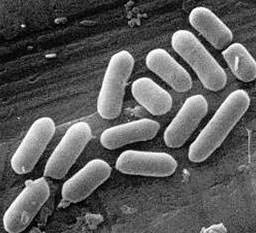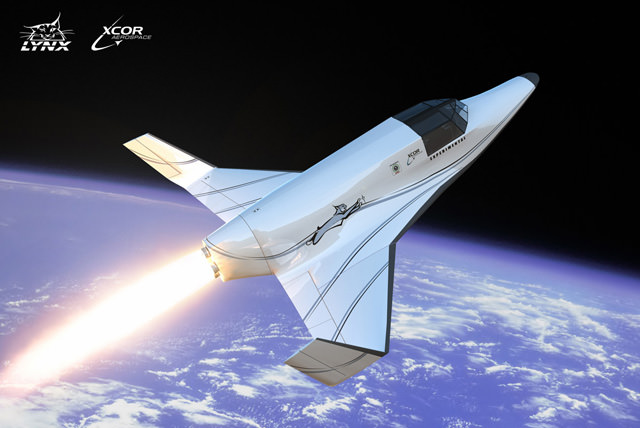[/caption]
The United States Rocket Academy has announced an open call for entries in its High Altitude Astrobiology Challenge, a citizen science project that will attempt to collect samples of microbes that may be lurking in Earth’s atmosphere at the edge of space.
Earth’s biosphere has been discovered to extend much higher than once thought — up to 100,000 feet (30,480 meters) above the planet’s surface. Any microorganisms present at these high altitudes could be subject to the mutating effects of increased radiation and transported around the globe in a sort of pathogenic jet-stream.

Citizens in Space, a project run by the U.S. Rocket Academy, is offering a $10,000 prize for the development of an open-source and replicable collection device that could successfully retrieve samples of high-altitude microorganisms, and could fly as a payload aboard an XCOR Lynx spacecraft.
XCOR Aerospace is a private California-based company that has developed the Lynx, a reusable launch vehicle that has suborbital flight capabilities. Low-speed test flights are expected to commence later this year, with incremental testing to take place over the following months.
Any proposed microbe collection devices would have to fit within the parameters of the Lynx’s 2kg Aft Cowling Port payload capabilities — preferably a 10 x 10 x 20 cm CubeSat volume — and provide solutions for either its retraction (in the case of extended components) or retrieval (in the case of ejected hardware.)
The contest is open to any US resident or non-government team or organization, and submissions are due by February 13, 2013. The chosen design will fly on 10 contracted Lynx flights in late 2013 or early 2014, and possibly even future missions.
Find out more about the challenge on the Citizens in Space site here, and check out an animation of the XCOR Lynx spacecraft below:


“Fix it-fix it-fix it-fix it-fix it!! Fix it-fix it-fix it-fix it-fix it!!!!!”–Fry, ‘Futurerama’
Ah yes, that is an interesting subject. For some astrobiology background, Marlow is the go to guy. He notes that this is as of yet a hypothesis:
“Indeed, thousands of microbial species have been found in the upper atmosphere, traveling up to thousands of kilometers. The best-studied “atmospheric bridge” is between North Africa and the Caribbean. Each year, up to one billion tons of dust are swept up by Sahara winds, and with a million bacteria per gram of sand, enormous quantities of biomass come along for the ride.
The upper atmosphere is not a particularly hospitable environment, and researchers have traditionally assumed that the dry, UV-zapped, nutrient-poor environment would kill off any stowaways. And although the jury is still out on whether these organisms can actively metabolize and grow in the atmosphere, they can find refuge in protective mineral grains or form spores.”
I am not well versed in that part of literature, but sadly the one reference I do find is infested with the known ‘panspermia’ crackpots Wickramasinghe and Narlikar:
“Attempts were made to probe the stratosphere in the years immediately prior to the space age [4]. Although it was claimed that bacteria and fungi can be found over the altitude range 18-39 km, such results were generally dismissed on the basis of contamination.
Narlikar et al. [5] sought to repeat these early experiments using rigorous sterilization protocols, combined with state-of-the-art balloon experimentation technology used in India for research in atmospheric physics as well as cosmic ray and infrared astronomy.”
The description of their cryogenic sampler, which is claimed to have sampled up to 41 km of altitude (i.e. above 100 000 feet), does not identify whether the samples were isolated during descent. It is clear however that the manifold was a) underpressurized for sampling (so easily contaminated) b) did not contain the necessary reference samples (to check for contamination).
In fact, the crucial need for checking for contamination during sampling is absent the whole protocol, as it is geared for discovering what they want to discover. As it stands, these results are intriguing but worthless. The simplest hypothesis remains contamination.
I hope Citizen Science will find out the upper limits of the biosphere, as it seems to remain unknown and one may expect that surviving spores can be found at very high altitudes.
Not too surprising to see some of the crank science promoted by Wickramasinghe mentioned here. Some of his other recent pro-panspermia “research” includes:
-his finding that the Red Rains of Kerala are likely living “cells” deposited by a comet: http://hiddencause.wordpress.com/2010/09/01/red-alien-cells-reproduce-just-like-wickramasinghe-wanted/
-SARS is extraterrestrial in nature: http://news.nationalgeographic.com/news/2003/06/0603_030603_sarsspace.html
I do agree that further (legitimate) research of high altitude biota is sorely needed. Maybe Citizens in Space can lead the way.
I want one of those!